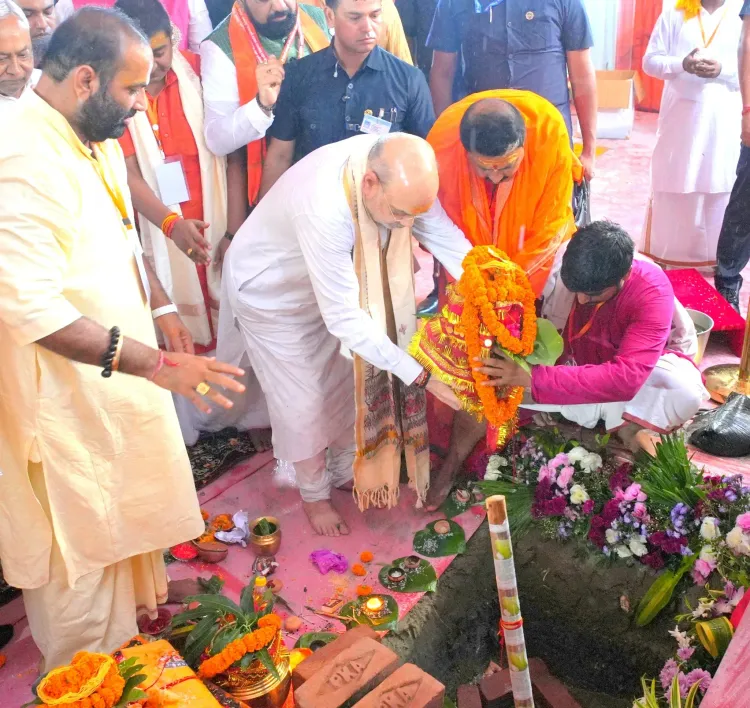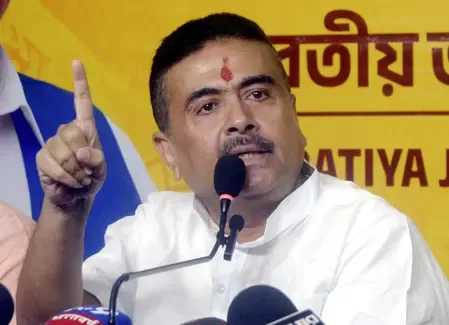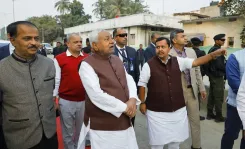Is Amit Shah's Participation in the Mata Janaki Temple Ceremony a Historic Moment?

Synopsis
Key Takeaways
- Amit Shah lays foundation for Mata Janaki Temple.
- Event celebrated as a historic milestone for Sanatan Dharma.
- Plans for religious tourism boost in Sitamarhi.
- Project connects Ayodhya, Sitamarhi, and Janakpur.
- Support from local and national leaders emphasizes its significance.
Patna, Aug 8 (NationPress) Following the foundation stone laying by Union Home Minister Amit Shah for the redevelopment of Mata Janaki Temple in Punauradham, Sitamarhi, NDA leaders in Bihar have celebrated this occasion as a historic milestone for Sanatan Dharma and the Mithila region.
Bihar PHED Minister Neeraj Kumar Bablu described it as “a significant day for followers of Sanatan Dharma globally,” emphasizing that this project will enhance the respect for Sanatan values on an international scale.
“Previously, devotees traveled to Ayodhya for Lord Ram, but now they will prioritize a visit to Sitamarhi, as Sita is revered before Ram. This reflects the belief of millions of Sanatanis. The state government has procured around 50 acres for this initiative, in addition to the existing 17 acres associated with the old Sita temple. A magnificent temple will be constructed here, and we extend our gratitude to PM Narendra Modi, CM Nitish Kumar, and HM Amit Shah,” he stated to IANS.
Bihar Health Minister Mangal Pandey credited the “double engine” government for this transformative initiative, announcing plans for a corridor connecting Ayodhya, Sitamarhi, and Janakpur in Nepal.
“Sitamarhi is poised to become a major religious tourism hub for Sanatanis, significantly boosting the state’s economy,” he added.
Union Textiles Minister Giriraj Singh linked this project to the broader Ram Janmabhoomi movement, reminiscing that “previous rulers” neglected the Ayodhya temple for centuries.
“The Ram temple was realized under PM Modi’s leadership. Without a Janaki temple in Sitamarhi, this progress would remain unfinished. Now, with Amit Shah and Nitish Kumar laying the foundation, it is a moment of pride for Sanatanis,” Singh advised IANS.
Sheohar JD-U MP Lovely Anand mentioned that former MP Anand Mohan had urged CM Nitish Kumar to establish a grand temple in Punauradham, a proposal that was welcomed by the Chief Minister.
“PM Modi endorsed it, and today, HM Amit Shah has laid the foundation stone. This is a delightful and historic occasion for us,” she remarked.








